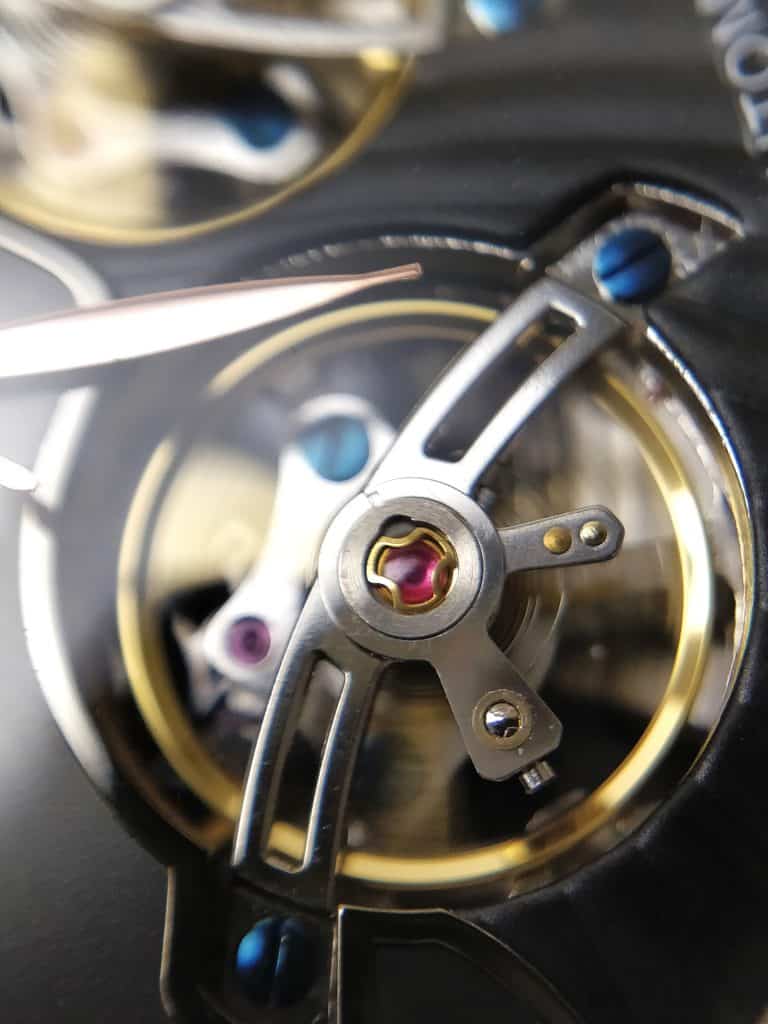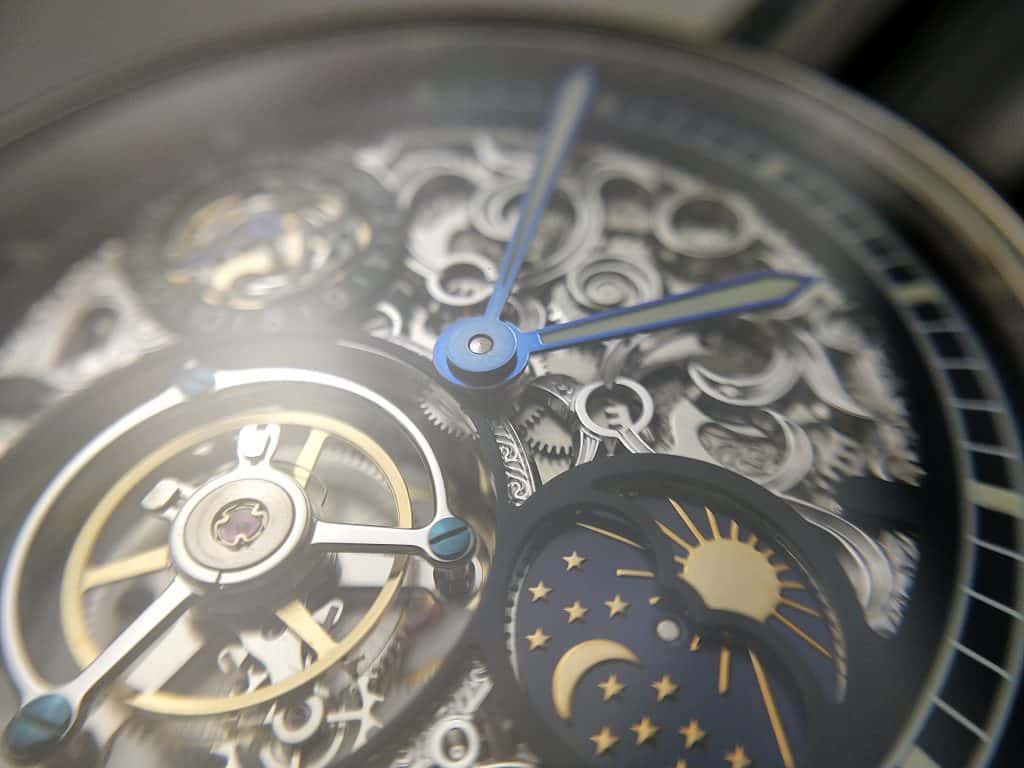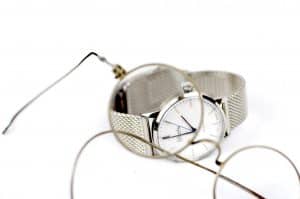If you have ever wondered why de watches have jewels, then we answer this question with our updated 2024 guide.
Jewels or gemstones have become a common thing you’ll find in watches today, whether they are high-end or not.
And the reason jewels were introduced in watch movements is simply to limit the friction in places with the most significant wear and tear.
The thing is when metal rubs against another metal, and the oil meant to aid lubrication breaks down, the bearing and pivots can take a severe beating, resulting in serious damage.
So to reduce the extensive friction that occurs when two metal components grind against each other, watch builders started including jewels at the points of friction as they lasted longer than typical metals.
The journey to finding the perfect jewel for watches
To finally resolve metal-on-metal wear and tear, watch builders started exploring substances that were a lot harder than metals.
This was when they started using jewels within watch movements.
Over the years, jewels that have become commonplace in watches include sapphires, diamonds, and rubies.
While diamonds are a bit expensive, sapphires and rubies are a lot cheaper, mainly because they could be synthetically produced.
In terms of popularity, rubies are more popular than sapphires, and that’s because they have a Mohs scale that is very similar in measurement to those of diamonds.
At some point in watch history, the number of jewels included in a watch determined its quality.
Watch movements and jewel embellishments
When jewels started showing up in watches, they were primarily fitted in all the pivot points in the gear train.
More so, they were also nicely placed in the anti-shock settings.
But as watchmaking became even more complicated, the number of jewels included in watch movements increased significantly.

Additionally, as synthetic jewels became easier to make, coupled with the growing marketing in the watch industry, watchmakers began jamming their timepieces with jewels.
This meant jewels were now being placed in areas where they shouldn’t.
And the reason for doing this was because of the heavy jewel marketing that was taken over the watch industry, as it was believed that watches with more jewels were superior to those with fewer jewels.
When did jewels first feature in watches?
Even though jewels are now an integral component of watches, this essential watch paraphernalia was first introduced in 1704 by famous watchmakers like Peter Debaufre, Nicolas Fatio de Duillier, and Jacob Debaufre.
Since then, they have become an essential element of watchmaking.
The idea of jewels made sense at that time because it came when gemstones were lauded to be much harder than metals, which were prone to wear and tear.
Following the introduction of jewels into watchmaking, more conventional watchmakers started experimenting with diamonds, sapphires, and rubies.
And because jewels such as diamonds, rubies, and sapphires were slicker than metals, they provided more robust protection for vulnerable areas while also aiding smoother and hassle-free movement.
Jewels and watch accuracy
One thing that most watch enthusiasts always look out for when shopping for watches is their accuracy, and that’s because almost every watch wearer would like to wear an accurate timepiece.
This explains why some Swiss watch manufacturers spend a long time fine-tuning the accuracy of their watches, to a point where you won’t have to correct them for many months or even years.
Well, one thing that contributes to watch accuracy is the number of high-quality jewels included in it.
So next time you come across a watch that dwells so much on its accuracy, look closer to see how many jewels it comes with.
Which is better, sapphires, rubies, or emeralds?
To be honest, we can’t say for sure whether sapphires or rubies are best for building jewel bearings in a timepiece.
Whether a watch comes with rubies or sapphires, the smoothness of a watch’s movement greatly depends on the design and extensive sophistication of the internal parts.
Sure, rubies have proven to be a popular stone for watchmakers, as most watches on the market today seem to feature this component, but guess what?
The question of whether rubies, sapphires, or emeralds are the best stones for watches all boils down to the purpose of including these components in the first place.
More so, sapphires may prove to be the better stones in place of rubies for some specific designs.
That said, it would be inaccurate to state categorically that one of these jewels is better than the other.
Are more jewels in a watch better?
Are more jewels in a watch better?
This is one question many watch enthusiasts have not been able to answer.
But today, we would love to set the record straight.
While jewels are primarily used in watches to reduce the friction between a watch’s mechanical movements, we are beginning to see watchmakers include more jewels than necessary.
And the reason is that watches with more jewels are thought to be superior to watches with limited jewels.
Typically, a standard mechanical jewel watch will feature around 17 stones.
In some cases, 21 jewels are used in some watches, and the reason for this is to minimize the positional errors that can affect a watch’s accuracy.
For watches with high complications like a tourbillon watch, a chronograph, or a perpetual calendar watch, you’ll notice that they have more jewels to minimize positional errors, stabilize bearings and reduce frictions.
Also, some ultra-thin timepieces feature higher jewels in their movement.

Frequently asked questions: Learn more about watch jewels
Are 17 jewel watches worth anything?
Are 17 jewel worth anything when looking at watches?
Well, stay with us as we will get to that in a bit.
To start with, a timepiece that features 17-jewels is typically called a fully jeweled watch.
What this means is that the watch features jewel bearing in all the right places, including the mechanical movement, the balance wheel, down to the center wheel pivot.
What does 21 jewels mean in reference to watches?
Just like a 17-jewel watch, a 21-jewel timepiece is also called a fully jeweled movement.
The only difference with a 21-jeweled watch is that it comes with a few extra capstones nicely put in place to resolve positional errors.
These additional stones mostly come with premium quality timepieces.
Do quartz watches have jewels?
Quartz-powered watches also have moving parts like their mechanical counterparts.
Nevertheless, not all quartz watches feature jewels in them.
Before the early 70s, a few battery-powered watches like the Seiko Astron featured five to seven jewels in their caliber.
Conclusion
To wrap up, we want you to keep in mind that jewels ensure that a watch will function longer until it requires servicing.
Plus, jewels ensure that the damages to high wear and tear points are significantly reduced.
Even though the number of jewels featured in a timepiece was once an indicator of its complexity or quality, this no longer holds water in today’s watch world as watch collectors are increasingly growing less interested in jewels and paying more attention to design, quality of movement and materials as well as the overall performance of a timepiece.
- Why Are Watches Set at 10 10 – The Top Reasons Why
- Why are Swiss Watches So Expensive
- Why Do People Wear Watches Upside Down? – Guide 2024
- Why Do Astronauts Wear Two Watches
- Why do Soldiers Wear Watches Backwards – Questions Answered 2024
- Do Expensive Watches Tick – Updated Guide 2024
- How to Store Watches – Updated Guide 2024


